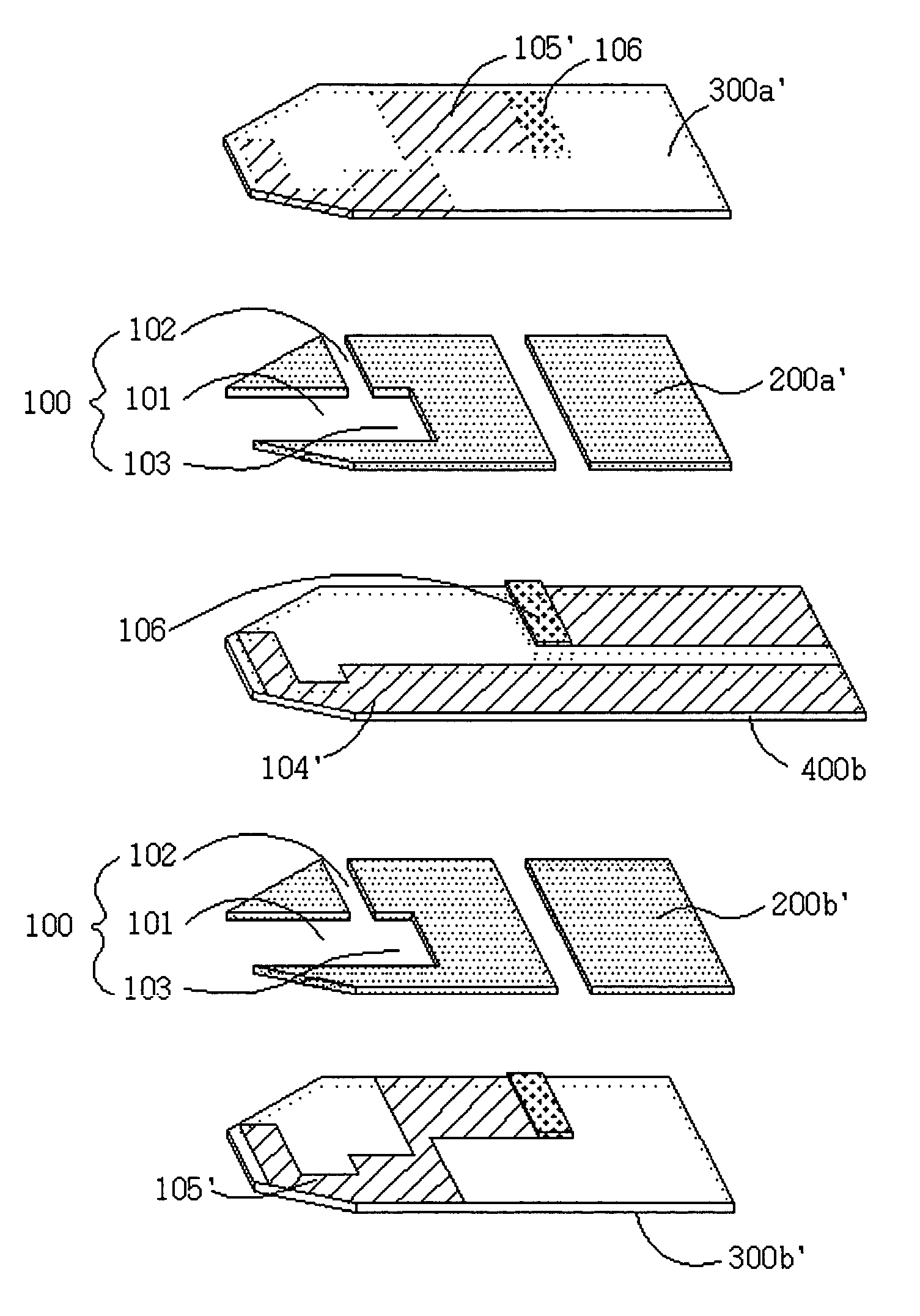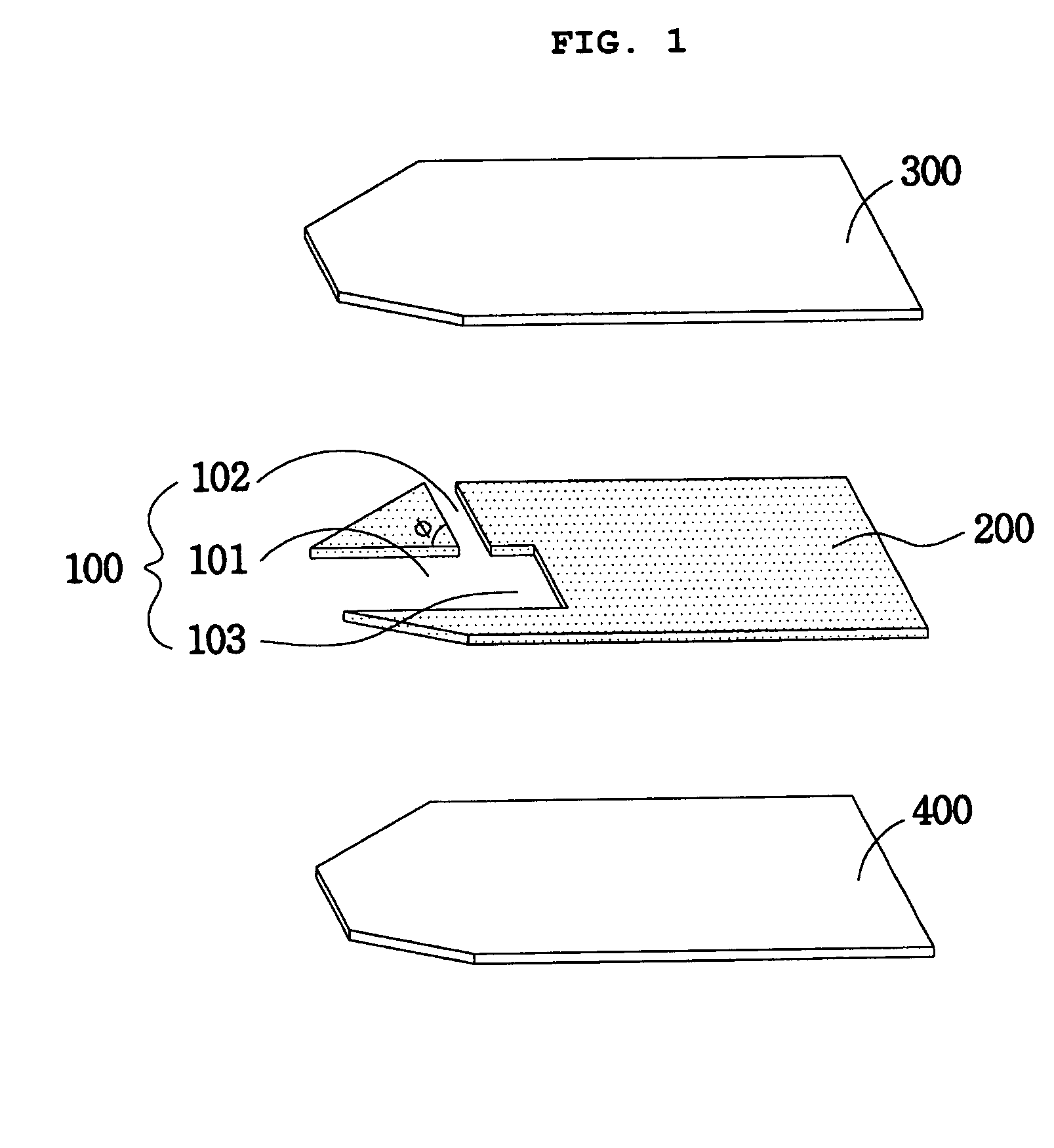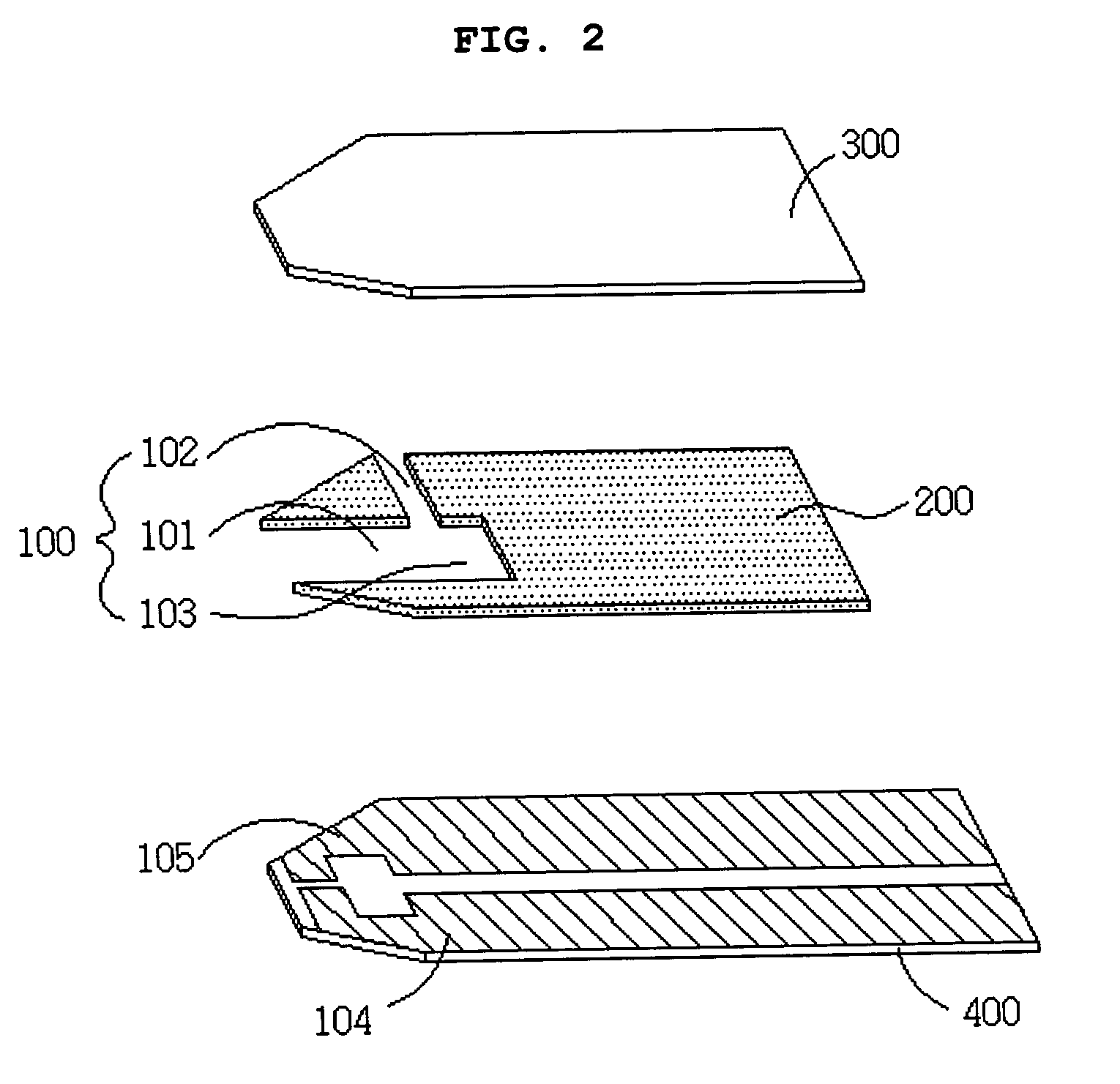Electrochemical biosensors
a biosensor and electrochemical technology, applied in the field of electrochemical biosensors, can solve the problems of insufficient control of the amount of samples introduced, affecting colorimetric analysis, and requiring precise care, so as to achieve rapid and accurate introduction of physiological samples
- Summary
- Abstract
- Description
- Claims
- Application Information
AI Technical Summary
Benefits of technology
Problems solved by technology
Method used
Image
Examples
example 1
Fabrication of a Flat Type Biosensor
[0065]Conductive carbon paste was screen-printed to form a symmetrical pattern on a polyester base plate 400 to give working electrode 104 and a reference electrode (or reference electrode) 105. The interval between the two electrodes is 125 μm. A curing of the printed electrodes at 140° C. for five minutes yielded a single electrode body for a flat type biosensor.
[0066]Thereafter, the sample introducing part 100, comprising the sample introducing passage 101, air discharge passage 102, and void 103 formed therein, was fixed by pressing double-sided tape made of polyester. The sample introducing passage 101 communicates perpendicularly with the air discharge passage 102, and the ratio of the width of the air discharge passage 102 to that of the sample introducing passage 101 was controlled to be 1:2. The void 103 was formed to extend beyond the sample introducing passage 101. The total amount of sampled blood within the sample introducing part 100...
example 2
Fabrication of a Converse Type Biosensor
[0069]As shown in FIG. 3, a working electrode 104′ and an electrode connector 106 were screen-printed with conductive carbon paste, and a curing was carried out at 140° C. for five minutes. Then, a circuit connector was screen-printed with the silver paste on one end of the electrode connector 106. The cover plate with the printed electrode as a reference (auxiliary) electrode 105′ was screen-printed with carbon paste and was cured. Finally, the biosensor was fabricated such that the end of the reference electrode 105′ was screen-printed with silver paste to be the circuit connector.
[0070]The sample introducing spacer 200′ comprising the sample introducing passage 101, air discharge passage 102, and void 103 was placed on the base substrate by pressing double-sided tape made of polyester. The ratio of the width of the air discharge passage 102 to that of the sample introducing passage 101 was 1:4, and the total amount of sampled blood within t...
example 3
Fabrication of a Differential Flat Type Glucose Sensor
[0073]The differential flat type glucose sensor was prepared in the same manner as in Example 1. As shown in FIG. 4, the differential flat type biosensor was fabricated by providing a small amount of bovine serum albumin (BSA) on the differential working electrode 104 of the base substrate 400a, instead of the hexaamineruthenium (III) chloride and glucose oxidase used in Example 1, and by pressing the cover plates 300a and 300b.
PUM
| Property | Measurement | Unit |
|---|---|---|
| angle | aaaaa | aaaaa |
| angle of communication | aaaaa | aaaaa |
| angle | aaaaa | aaaaa |
Abstract
Description
Claims
Application Information
 Login to View More
Login to View More - R&D
- Intellectual Property
- Life Sciences
- Materials
- Tech Scout
- Unparalleled Data Quality
- Higher Quality Content
- 60% Fewer Hallucinations
Browse by: Latest US Patents, China's latest patents, Technical Efficacy Thesaurus, Application Domain, Technology Topic, Popular Technical Reports.
© 2025 PatSnap. All rights reserved.Legal|Privacy policy|Modern Slavery Act Transparency Statement|Sitemap|About US| Contact US: help@patsnap.com



